Arshad Sharif murder case: New JIT formed on Supreme Court’s order
The federal government has constituted a new joint investigation team (JIT) to investigate the murder of journalist Arshad Sharif and submitted its notification in the Supreme Court in line with the top court’s order, with the top court ordering it to submit its progress report within two weeks.
A five-member larger bench of the Supreme Court headed by the Chief Justice of Pakistan (CJP) Umar Atta Bandial resumed hearing on Thursday the suo motu case concerning Sharif’s killing under questionable circumstances in Kenya. The court took up the case on an application submitted by the slain journalist’s mother. The other four members of the bench are Justice Ijazul Ahsan, Justice Jamal Mandokhel, Justice Syed Mazahar Ali Akbar Naqvi, and Justice Mohammad Ali Mazhar.
In its hearing on Wednesday, the top court had ordered that the JIT should include officials from the Inter-Services Intelligence (ISI), the Intelligence Bureau (IB), the Federal Investigation Agency (FIA) and the police.
The new JIT includes five members including representatives of Islamabad police, the Inter-Services Intelligence, the IB and FIA, Additional Attorney General (AAG) Aamir Rehman told the court while submitting the notification. The AAG added that Interpol would be contacted to arrest the accused if needed.
The CJP acknowledged the suggestions of the Ministry of Foreign Affairs in its report while instructing the JIT to take down the statements of Arshad Sharif’s mother and others.
The top court left it to the JIT to determine the procedure of investigation while telling it to approach the court in case of any obstacles. The court added that the investigation should proceed free of any pressure.
The AAG did point out that the investigation was predicated on the cooperation of the Kenyan police, including questioning Kenya-based suspects Khurram and Waqar.
Justice Mazahar Naqvi said that the accused might voluntarily appear for questioning. “If the accused do not appear, legal action can be taken.”
The court ordered the JIT to submit a progress report every two weeks.
Fact-finding team
Prior to the suo moto hearing, a fact-finding team was dispatched to Kenya to ascertain on-ground facts surrounding the murder. Its 600-page report, submitted to the top court on Wednesday, stated that Sharif’s murder was a planned, targeted assassination with transnational characters.
“Both members of the FFT have a considered understanding that it is a case of planned targeted assassination with transnational characters rather than a case of mistaken identity,” the report said.
It was likely that Arshad Sharif had been forced out of Dubai by its authorities. There seemed to be characters from multiple countries involved. “The transnational roles of characters in Kenya, Dubai and Pakistan in this assassination cannot be ruled out.”
The report said that although Arshad Sharif was shot from the back and the bullet exited from his chest, there was no bullet mark on the seat of his car. “That does not match with his sitting position, position of the gunners as well as the line of fire. “
The report said that the version of the Kenyan police regarding ‘mistaken identity’ was full of contradictions. It added that Khurram, who was driving Arshad Sharif’s vehicle, also presented a story that contradicted itself.
It claimed that Waqar, who was hosting Arshad Sharif in Kenya, seemingly had links with Kenyan intelligence as he handed over the journalist’s phone and tablet to them instead of the police. He is also well connected within Pakistan.
The report is 592 pages long, including 80 pages of findings with annexures, including photographs.
The fact-finding team confirmed that Arshad Sharif’s body carried marks of torture as nails from four fingers of his left hand were missing. It added that the Kenyan authorities had taken nails as DNA sample, but did not specify how many nails were taken.
Conflicting reports of events The report quotes Kenyan police officials as well as Waqar and Khurram to try and construct how the event took place. However, the versions have massive differences.
It is settled that Arshad Sharif reached Kenya on August 20 and stayed at the Royal Green apartments till October 22. He then went to a farm in Kwenia with Khurram in the vehicle in which he would ultimately be found dead.
He stayed there for a barbecue party until October 23. His trip back from the barbecue party would be his last.
Here is where the versions differ.
A special unit of the Kenyan police called the GSU claimed it had set up road blocks near the point where the dirt road from the farm reached the metalled road going to Nairobi. However, they admitted that putting up road blocks was not a regular part of their job. The report also stated that the police was stationed in an ‘ambush’ posture.
Khurram says that he saw that stones had been placed on the road and thought they had been placed by ‘dacoits’. He claims he saw no sign of either police or a road block.
The police says that when the vehicle reached the block, they were fired upon from within the vehicle upon which they fired back. However, Khurram simply says they were fired upon.
After coming under fire, Khurram drove in a hurry to another farm at Oletepesi, 25 kilometres away. He ‘sensed’ that Arshad Sharif had been wounded but only upon reaching the farm did he see that the journalist was dead.
Around 24 hours later, the police said that the journalist had been shot on the basis of mistaken identity.
The examination showed that there were nine bullet marks on the vehicle but none on the driver’s side. There was not even a splatter of blood on the driver’s seat. The bullet that killed Sharif from behind could left no mark on the seat he was sitting in.
To top the mystery, the police unit siad that despite the vehicle not stopping , they decided not to chase the vehicle. Their reason for this is that one of their men had been injured by the fire coming from the vehicle, however the FFT’s invesitgators were not given access to the injured policeman. Curiously, the police also admitted that they collected all nine shells they had fired and then moved their collegaues to the hospital, even though he was severely wounded.
For the latest news, follow us on Twitter @Aaj_Urdu. We are also on Facebook, Instagram and YouTube.


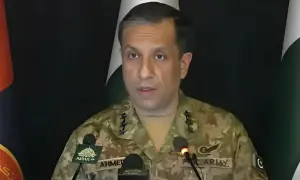
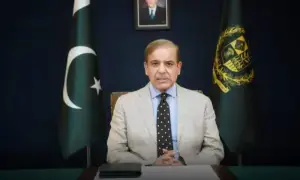

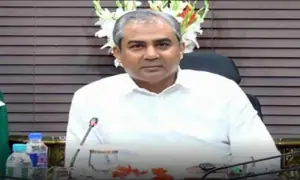
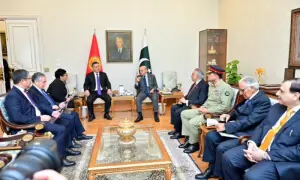
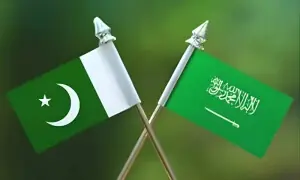
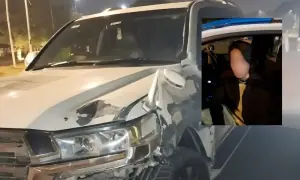

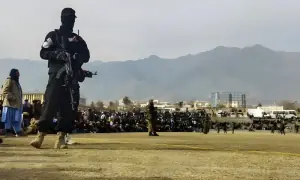
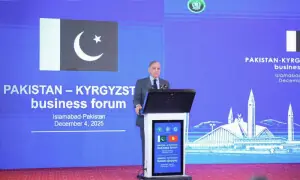

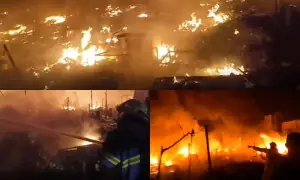
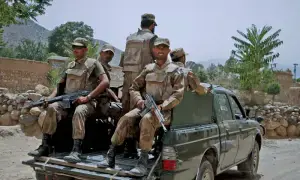


Comments are closed on this story.